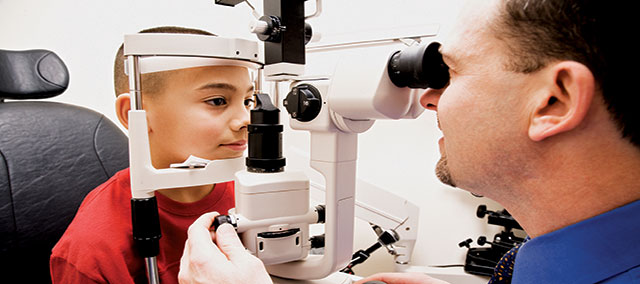As children and teens gear up for another year of studies, parents should be aware of often overlooked obstacles that may hinder academic success: vision problems.
Challenges with learning and performance
Living in a visual world, almost 80 percent of what children learn through age 12 is from their sense of sight. In order to succeed in common activities, such as learning at school, reading, playing sports and being engaged in everyday activities, kids call on more than 15 visual skills.
For children, the most common vision issues are known as refractive errors, such as astigmatism, farsightedness and nearsightedness. These issues are more common than you may think – affecting one in four school age kids. Such problems, when left untreated, can hinder a child’s ability to learn in school.
In fact, studies conducted by the National Institutes of Health and the National Eye Institute reveal that over 60 percent of students with learning problems have undiagnosed vision abnormalities that contribute to their difficulties.
Eye exams for every child
According to the American Optometric Association, children should receive their first eye exam by age one, a second at age three and another before beginning kindergarten. From then on, students should have a yearly comprehensive exam to evaluate their total vision. While some students may receive a yearly screening from a school nurse, the American Foundation for Vision Awareness reveals that such exams only identify five percent of childhood vision issues.
Be aware of the signs
As a parent or caregiver, being aware of common health concerns in your children is part of your job. But are you aware of the warning signs for bad vision? Consider the following symptoms that indicate a child may have a vision problem:
- Complains frequently about headaches or tired eyes
- Avoids activities that require near vision, such as reading or homework
- Avoids activities that require distance vision, including participation in sports or play activities
- Sits too close to the TV or holds a book close to the face
- Loses place or skips words while reading
- Squints or tilts head to see better
- Closes one eye to read, watch TV or see better in general
- Writes uphill or downhill
- Finds it difficult to copy material from the whiteboard
If any of these warning signs are detected, parents or caregivers should schedule an appointment with an eye care professional for a comprehensive exam to evaluate the child’s vision and identify any necessary treatment options.
Proper vision care is essential for overall health and wellbeing for children of every age. View videos and learn more about kids’ vision needs by visiting www.ameritasinsight.com.
– Family Features

